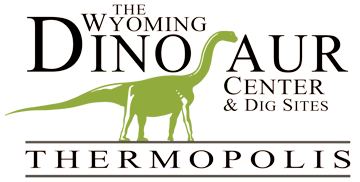Geospatial data collected with a Nikon Total Station from a dinosaur quarry in the upper part of the Morrison Formation in north-central Wyoming were plotted on ArcGIS ArcScene software. The resulting three-dimensional maps indicate two distinct sauropod bone assemblages with closely associated shed theropod teeth separated by a weakly developed paleosol. Consequently, previous hypotheses that all bone elements and theropod teeth in the quarry were chronologically connected are amended. Synthesis of geological and paleontological data provides evidence that a juvenile Camarasaurus was the center of feeding activity in a shallow-water, palustrine-lacustrine setting in the lower assemblage. The high ratio of juvenile to adult allosaurid teeth suggests one or two adults in the company of several juveniles during a scavenging event. A high incidence of theropod teeth in the upper assemblage suggests that another feeding event may have occurred, but data loss from initial traditional excavation techniques precludes a more detailed interpretation. Although the Upper Jurassic Morrison Formation in the western United States yields abundant sauropod and theropod remains, few sites documenting theropod-prey interactions have been reported. Evidence of theropod feeding activities has been difficult to establish in seemingly homogeneous continental deposits with traditional excavation techniques alone. Geographic Information Systems (GIS) is a valuable tool that allows paleontologists to establish chronostratigraphic constraints in complex continental assemblages, assess the degree of time averaging, and evaluate important geospatial patterns.
